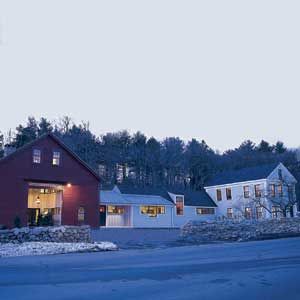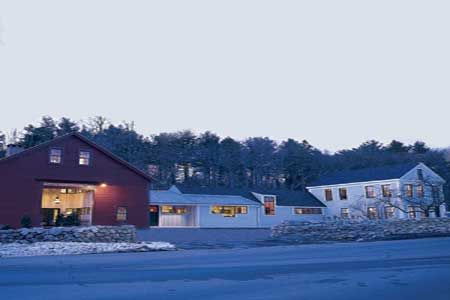
When you look past the decades of accumulated dust and debris in the barn at the Carlisle house, you see a real tribute to the people who built it. After 150 years, the barn is looking good — its exposed timbers and sheathing intact, its frame square and upright.
Tom Silva was suitably impressed when he looked up and around in the barn, but less so when he looked down. The wooden floor and sills that sit under the great old barn are not so great — in fact, they’re so badly rotted that they’ll need to be replaced before the structure can be converted into living space. So how do you fix a rotten floor that happens to be sitting under a three-story building?
According to Tom Silva, it’s simple: You pick the barn up, fix the floor, then put the barn back down on it. No problem.
“It sounds complicated, but it really is very efficient, and it benefits a lot of different elements of the project,” says Tom. “By lifting it up, we can not only get down to the floor to fix it, but we can also lay the foundation straight, and at the right level.”
Of course, it takes a bit of preparation before you can lift an entire barn — assuming you expect it to stay in one piece when you do. So with the lift scheduled for April 30, a jacking company spent some time prepping the barn for its big day.
“They spent the first few days building the cribbing,” says Tom, referring to the support framework that fills the basement and rises up through the first floor of the barn. “Then they cut holes into the building — two in the front and two in the rear — and slid in two big beams.” Tom’s not kidding about the “big” part — these beams are 50 feet long and weigh about 120 pounds per foot.
With the large beams in place, workers cut five holes in the side of the barn and slid in five smaller beams, one next to each bent (the transverse supports inside the barn). The smaller beams rest on top of the large front-to-back beams.
“The small beams are attached to the side of the bents with steel plates,” says Tom. “This way, the jacking will lift the barn and leave the rotted first floor. They’ll actually do two lifts — the first will be about twelve inches, then they’ll reset the jacks and make a second lift of twelve inches. That’s when we take over.”
With the barn looming above them, Tommy’s team will remove the rotted floor and sills and create the forming for a new concrete sill to sit on top of the existing stone foundation. Still working under the jacked-up barn, they’ll replace the rotted sills and add LVLs (engineered beams) from side to side under each bent. It’s possible that they’ll even have to install new footings and columns in the barn’s basement to carry the new LVLs. All this with the barn standing two feet off the ground over their heads.
Once Tom is confident that the new work is complete, the jacking company will come back and let the barn down — very carefully — onto the new sill and beams. Then Tommy’s team will install the new floor system, which will consist of structural insulated panels, or SIPs. See? Simple.
And what does Tom think about the fact that his painstakingly crafted sills and beams will be completely invisible to future homeowners? He just smiles, and notes this is his favorite kind of job: the kind that provides a solid foundation for the more visible amenities homeowners will add later. They may never see the beams, but they’ll be awfully glad that their house keeps standing up. That’s Tom’s gift to the homeowners — and his tip of the hat to the nineteenth-century craftsman who raised the barn the first time around.
The barn was jacked up, and the center ell demolished, on April 30, 2004. If you missed it on the live WebCams, you can watch the time-lapse photographs of the day. Click on the Carlisle Project on the WebCam page to get started.

